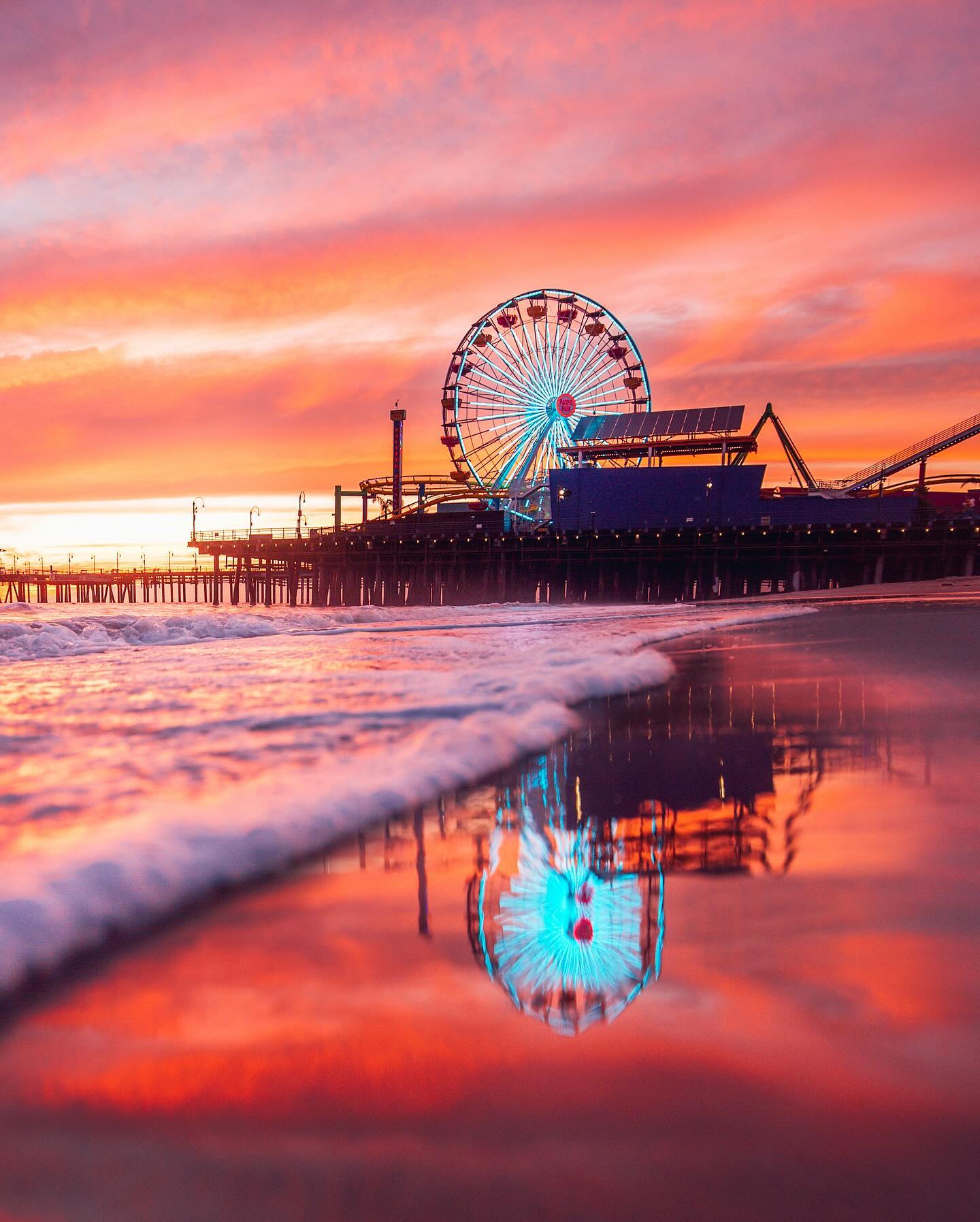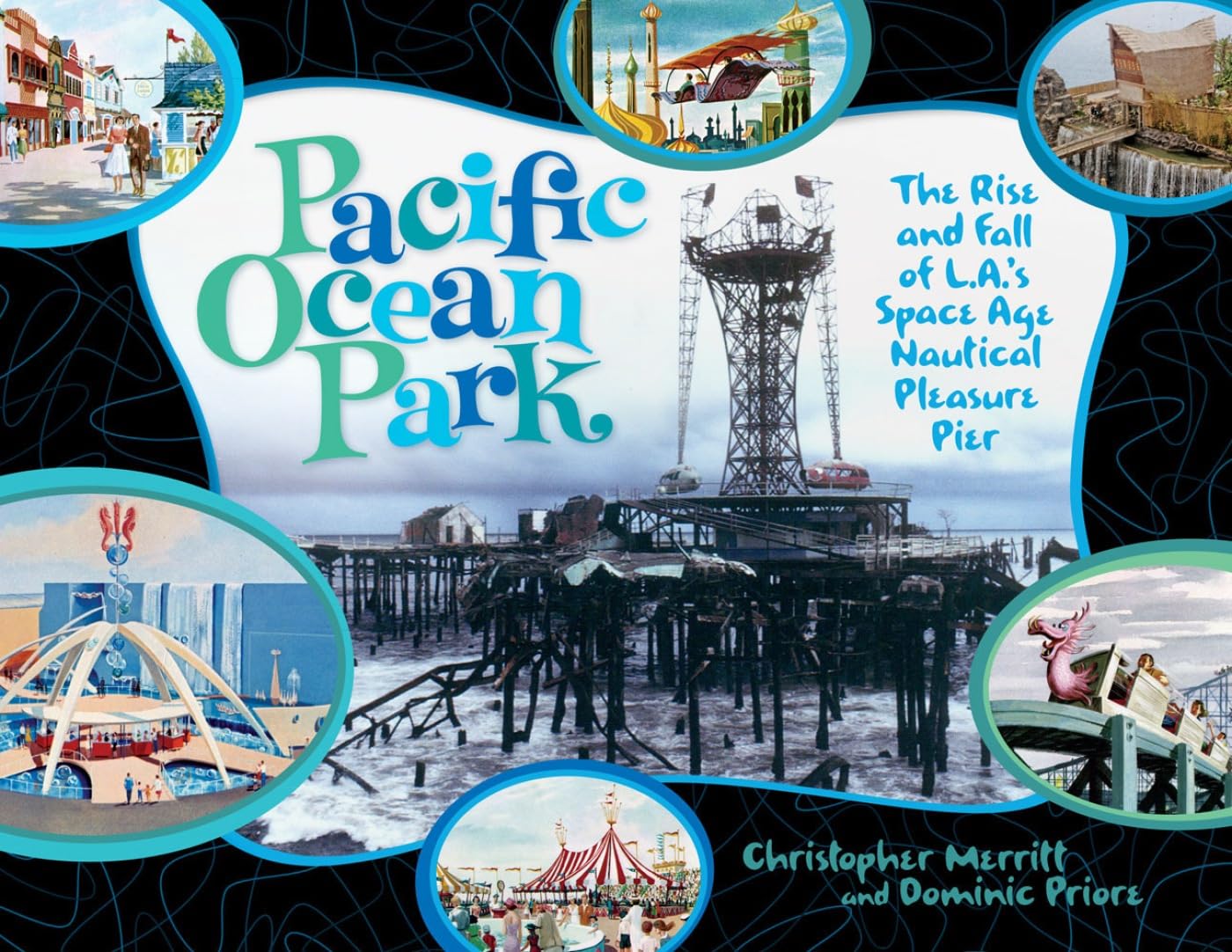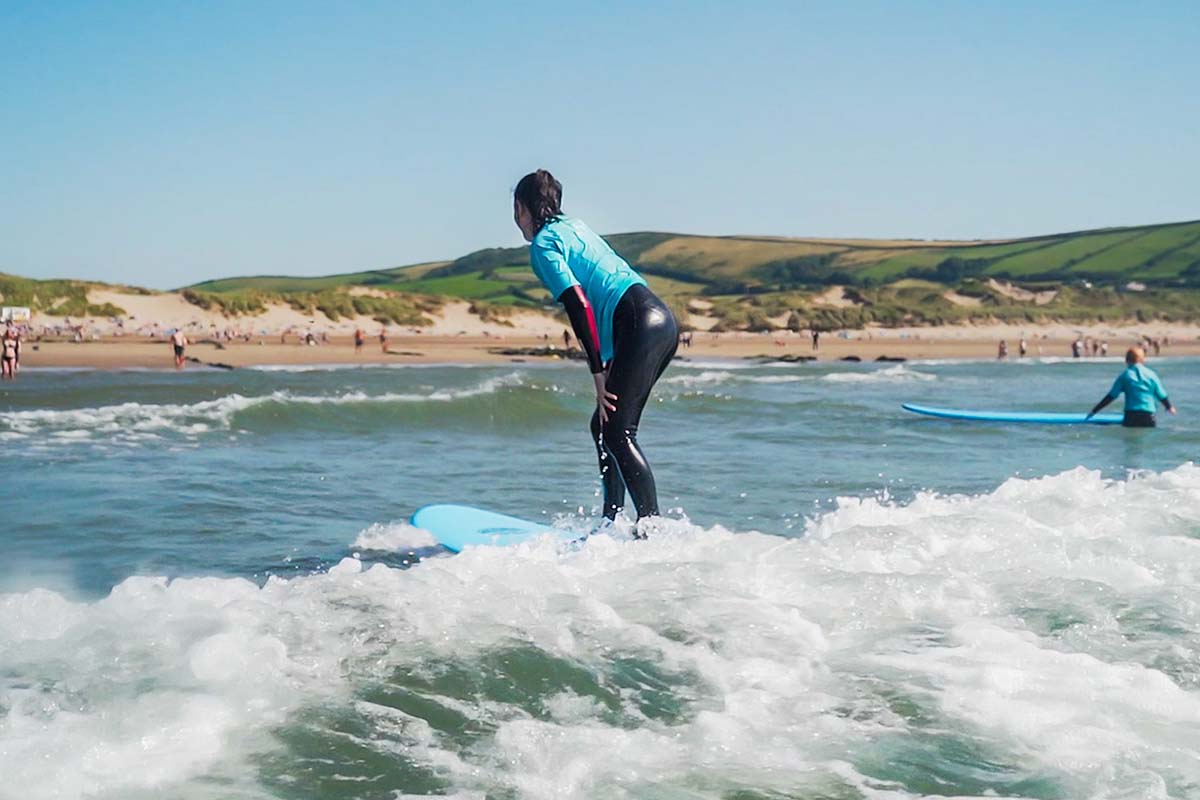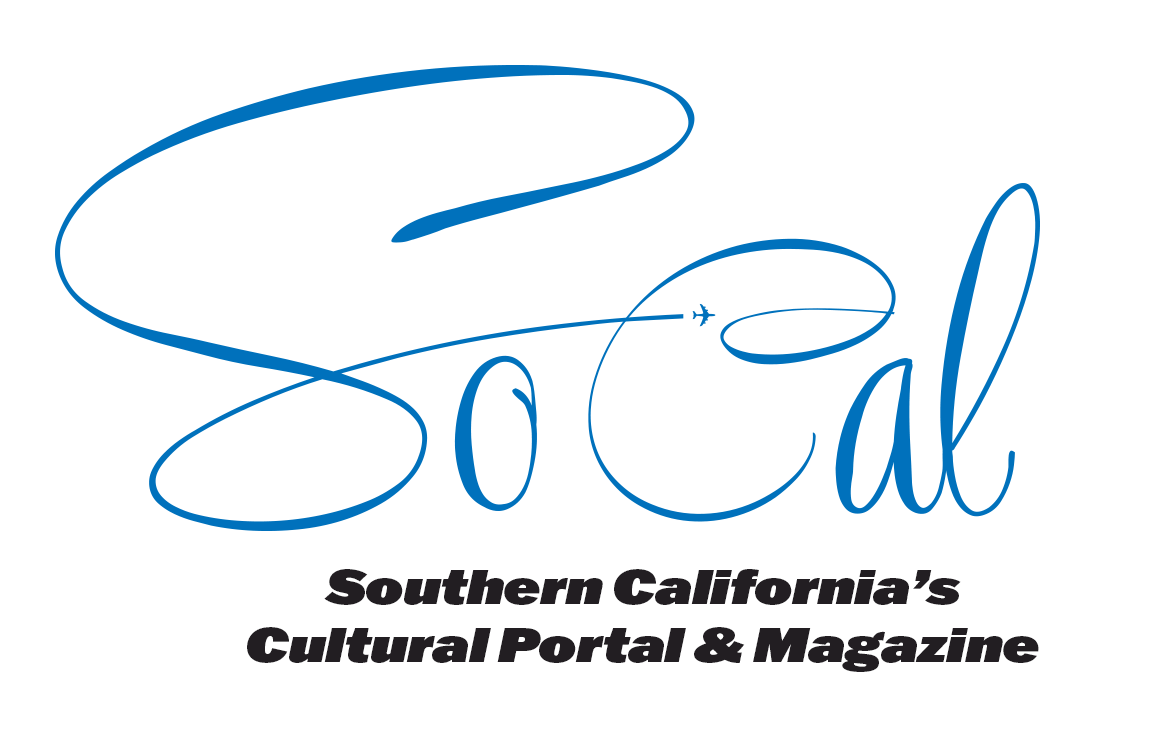Santa Monica turns 150 this year, and if you think that just means cake and fireworks, think again. This city isn’t just a pretty stretch of coastline—it’s a cultural engine, a political stage, a surfer’s dream, and one of California’s most enduring icons. It’s fashionable, it’s our Riviera, complete with an iconic pier, a gateway to legendary costal communities, and glamor.
Founded in 1875, Santa Monica began as a rail-connected beach escape for Angelenos and evolved into a complex urban village that blends beauty with substance. What started as a simple bayside resort became a magnet for visionaries, rebels, dreamers, and creators. Over the decades, it’s been everything from a silent film backdrop to a counterculture stronghold to a hub for green innovation and forward-thinking urban planning.
Santa Monica has always punched above its weight. In the 1920s and ’30s, it was where aviation giants like Douglas Aircraft helped usher in the modern aerospace era. In the postwar years, it became a sun-soaked haven for writers and artists seeking both inspiration and escape. In the 1960s and ’70s, it stood at the intersection of surf, skate, and protest culture. Today, it continues to blend high design and beachside simplicity, boutique commerce and street musicians, progressive politics and laid-back living.
It’s also become a symbol—whether that’s the final stop on Route 66 or the shimmering arch of the Santa Monica Pier in a thousand film scenes. Santa Monica’s streets have hosted Olympic athletes, world leaders, punk bands, TikTok stars, and just about every kind of person in between.
Culturally, the city has an outsized influence. It was a cradle for California skateboarding and home to artists like Jean-Michel Basquiat and Ed Ruscha at turning points in their careers. It has long been a battleground for progressive policies on climate, housing, and mobility. It’s one of the first cities to adopt a Climate Action & Adaptation Plan aiming for carbon neutrality. The local farmers market has inspired top chefs across the country. Even its urban design—think walkable neighborhoods, open beach access, integrated transit—has been studied as a model for livable cities worldwide.
And yet, Santa Monica hasn’t lost its charm. You can still sit on a bench in Palisades Park and hear the waves crash while watching a yoga class warm up, a wedding shoot unfold, or a guy with a parrot on his shoulder walk by like it’s no big deal. You can grab a coffee on Montana Avenue, catch an avant-garde play downtown, or ride a beach cruiser from Main Street to the Pier without checking your phone once.
So this year, don’t just think of Santa Monica as another pretty beach town. Think of it as a living story—150 years deep and still being written.

Santa Monica Pier at Sunset
That iconic Ferris wheel glowing above the Pacific—whether it’s framed by silhouettes or reflected in low tide pools, it’s a classic shot. Pacific Park lights up at dusk and brings energy into the night. Open year-round, with rides, food stands, and street performers.
More info: Visit the official Pier website for hours, upcoming events, and planning tips.

Fogo de Chão
When Fogo de Chão set its sights on Santa Monica, it wasn’t just about adding another restaurant to its growing portfolio — it was about planting roots in one of the most iconic coastal cities in California. The vision was clear: combine the brand’s deep Brazilian culinary traditions with the energy and allure of the Southern California coast. That vision materialized at 1551 Ocean Avenue, a premium oceanfront space that once housed Del Frisco’s Grille, directly across from the Santa Monica Pier.
In early 2024, the company secured the location and began transforming it into something more than a restaurant. What emerged over the following year was a 7,000+ square foot destination designed to reflect both Fogo’s evolution and the character of Santa Monica itself. The architecture embraced open spaces and natural light, featuring warm woods, neutral tones, and coastal-modern details. A signature element of the new space was the covered, glass-enclosed patio overlooking the ocean — a spot that would quickly become one of the most sought-after seats in the city.
At the heart of the restaurant, the open churrasco grill served as both a kitchen and a stage. Diners could watch the gaucho chefs in action, tending to the flames and carving skewers of picanha, ribeye, and lamb chops with practiced precision. The Market Table offered vibrant, seasonal produce and traditional Brazilian sides like feijoada and farofa, while the Bar Fogo area provided a more casual experience, with cocktails, small plates, and a bustling happy hour scene.
Fogo de Chão opened its Santa Monica doors in April 2025. The launch was marked not just by the usual press and fanfare, but by a deliberate connection to the community. A portion of first-week proceeds was donated to support food access in West LA, reflecting the company’s broader mission of hospitality with purpose. More than 100 local employees came on board, led by a general manager who brought years of experience from other Southern California Fogo locations.
The restaurant quickly drew both locals and tourists, captivated by its blend of spectacle, flavor, and setting. From lunch hours filled with beachgoers to romantic dinners under the sunset-lit patio, the Santa Monica location became a flagship for Fogo’s West Coast ambitions. It wasn’t just a place to eat — it became a culinary showcase, a celebration of Brazilian culture, and a welcoming space with panoramic views of the Pacific. As Fogo continued to expand nationally and internationally, the Santa Monica restaurant stood as a proud example of what the brand could be at its very best: rooted in tradition, refined in design, and elevated by the rhythm of its surroundings.
.
POP: PACIFIC OCEAN PARK

Version 1.0.0
In the golden age of American amusement parks, the Southern California coast became a battleground for attention. In 1958, a bold contender emerged: Pacific Ocean Park, or simply POP. Built on the site of the aging Ocean Park Pier in Santa Monica, POP was a joint venture between CBS television and Santa Anita Park, born from a desire to rival Disneyland, which had opened just three years earlier and captivated the nation.
From its opening day on July 28, 1958, POP was a sensation. With a theme combining space-age futurism and deep-sea fantasy, it offered an experience unlike any other. Guests entered through a glittering “Ocean Boulevard,” passed through a sea-creature-filled tunnel, and emerged onto a boardwalk packed with rides, games, and attractions that leaned into an aquatic dreamscape.
Among the highlights was the “Sea Serpent Roller Coaster”, which raced over the ocean on a twisting track suspended above the waves. The “Flying Dutchman” soared riders over the surf. The “Neptune’s Kingdom” dark ride took guests on a slow, mysterious journey through glowing, underwater realms. And towering over everything stood the “Ocean Skyway,” a gondola lift that gave panoramic views of Santa Monica Bay as it whisked visitors from one end of the park to the other.
Unlike Disneyland’s tightly controlled fantasy worlds, POP retained a gritty, carnival atmosphere—an intentional choice to retain the excitement of classic seaside amusement while embracing modern design and storytelling. It featured themed restaurants, live dolphin shows, and stunt performances. The park was also deeply tied to the emerging TV culture of the late 1950s and early ’60s, with CBS using it as a promotional platform and even filming shows on-site.
For a few years, POP was a smash hit. In its first summer, it drew over a million visitors. But trouble soon followed. Disneyland was constantly reinvesting in expansion and refinement, while POP faced logistical and political challenges. The park straddled both Santa Monica and Venice, and disputes between the cities, as well as rising maintenance costs for the aging pier infrastructure, began to weigh heavily.
By the mid-1960s, POP was in decline. Its ocean-side location made maintenance difficult and costly; salty sea air eroded machinery, and storm damage was frequent. Attendance fell sharply as Disneyland expanded and new competitors like Universal Studios opened nearby. By 1967, CBS had pulled out entirely, and the park limped through a few more seasons under different management before finally closing for good on October 6, 1967.
The remnants of the park stood abandoned for years, a haunting shell of what once was. Locals and surfers explored the decaying rides and skeletal pier structures, and POP became a kind of post-apocalyptic playground for those in the know. Fires, storms, and neglect gradually erased most physical traces. By the early 1970s, what remained of the pier was demolished, leaving only fragments of pilings visible from the beach at low tide.
Despite its short life, Pacific Ocean Park left a lasting impression on Southern California culture. It inspired stories, photographs, music, and nostalgia that still echo today. Some still refer to that stretch of beach as “POP Pier,” and the faded glamour of the park lives on in the memories of those who rode its roller coasters out over the sea.

Palisades Park
Running along Ocean Avenue, this clifftop park offers unbeatable views, art deco benches, and shady spots for reading or reflecting. A local’s favorite for walking, jogging, or just taking a breather.

South Beach / Bay Street Surf Spot
Forget Venice. If you’re into surfing—or just watching—this is where local wave riders hang. Mornings are mellow, the surf culture is real, and there’s always parking if you know when to go (hint: before 9 a.m.).

The Carousel on the Santa Monica Pier
It all began in the early 1900s with Charles I. D. Looff, a Danish-American master carver who crafted the very first carousel at Coney Island in 1876. After finding success on the East Coast, he moved west around 1910, bringing his vision of amusement park grandeur to California. In 1916, together with his son Arthur, Looff purchased beachfront land at Santa Monica and constructed a Pleasure Pier adjacent to the municipal pier. At its heart stood the majestic Looff Hippodrome, purpose-built to house one of his lavish carousels in a striking California‑Byzantine‑Moorish style structure.
The Hippodrome opened its doors on June 12, 1916, drawing crowds eager to ride its hand-carved merry-go-round. Looff’s original carousel remained there until 1939, when it was sold and replaced in 1947 by a new Philadelphia Toboggan Company Carousel built in 1922, relocated from Venice Pier. Today’s carousel boasts 44 wooden horses, two sleighs, and one goat—each restored and beautifully hand-painted by 1990.
Through the mid-century years, the pier changed hands and the original carousel survived even as other rides vanished. By the 1970s, there were proposals to demolish the structure to make way for redevelopment—but a robust local movement, led by preservation advocates like Save Santa Monica Bay, prevailed and the city gained ownership of the Pier in 1974.
Despite damage from powerful winter storms in the 1980s, restoration efforts launched in 1983, led by the Pier Restoration Corporation. Between 1977 and 1984, both the Hippodrome exterior and the carousel underwent extensive renovation. In 1987, the building was formally recognized as a National Historic Landmark and added to the National Register of Historic Places.
Over a century later, the Looff Hippodrome survives as one of only two intact amusement‑pier carousel buildings remaining on the West Coast. It has appeared in iconic films—most famously in The Sting (1973)—and continues to delight visitors as part of Pacific Park on the Santa Monica Pier.
